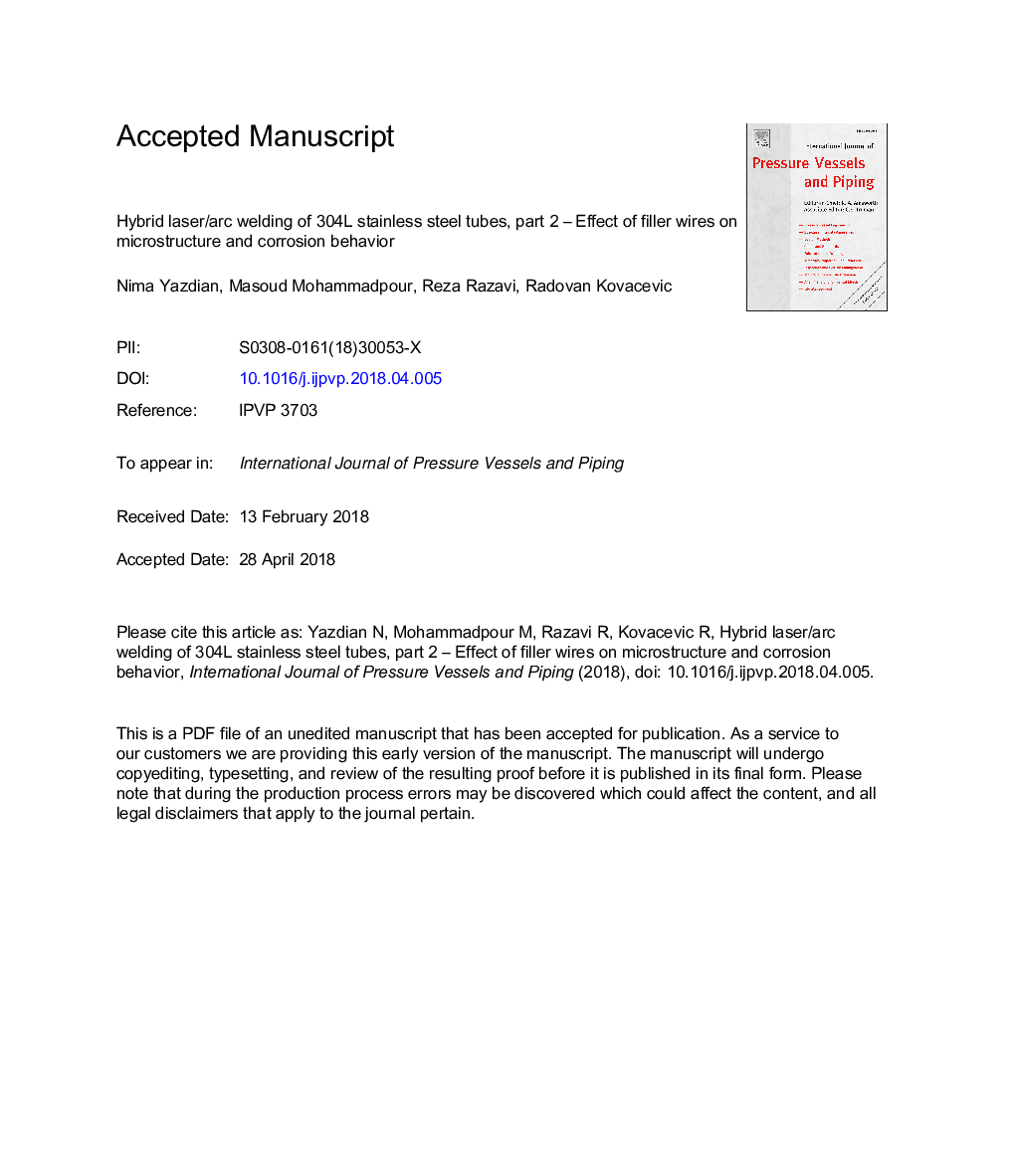| Article ID | Journal | Published Year | Pages | File Type |
|---|---|---|---|---|
| 7175048 | International Journal of Pressure Vessels and Piping | 2018 | 30 Pages |
Abstract
The effect of filler wire used in hybrid laser arc welding (HLAW) of AISI304 corrosion resistant steel (CRS) on microstructural alteration and pitting corrosion resistance were studied, utilizing the scanning electron microscope, X-ray diffraction (XRD), and cyclic potentiodynamic polarization analysis (CPPA). According to the XRD patterns, the dominant phase formed within the fusion zone was γ-austenite coupled with primary δ-ferrite as the minor phase. The calculated amount of δ-ferrite inside the FZ was slightly higher than the amount for the base metal that could be attributed to the higher cooling rate in the weld region. From the microstructural point of view, observation showed that the formation of δ-ferrite dendrite was consistent with the ferrite-austenite solidification mode, predicted by the pseudo-binary diagram. In terms of corrosion resistance, CPPA results revealed that the HLAW process had no negative effect on general corrosion properties of the joint for various filler wires. A316LSi wire generated the weld with the most superior pitting resistance and the smallest hysteresis loop associated with the lowest unstable passive region. This process resulted in the best passivation and re-passivation behavior with respect to the base metal.
Related Topics
Physical Sciences and Engineering
Engineering
Mechanical Engineering
Authors
Nima Yazdian, Masoud Mohammadpour, Reza Razavi, Radovan Kovacevic,
